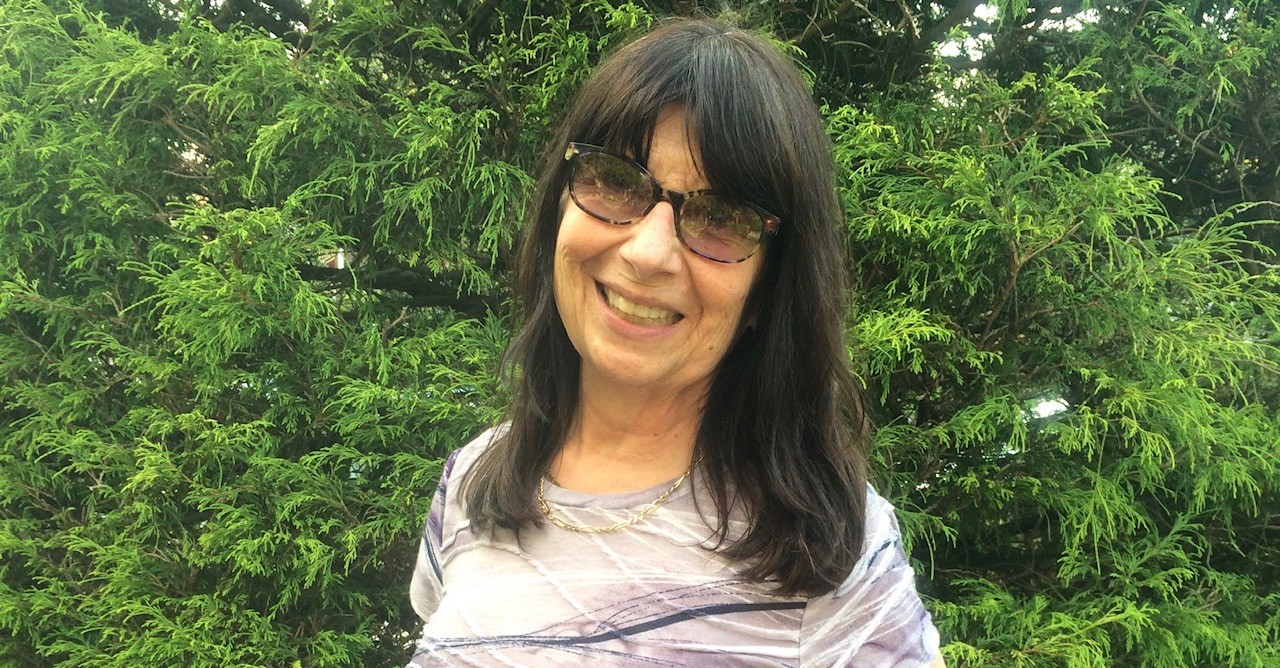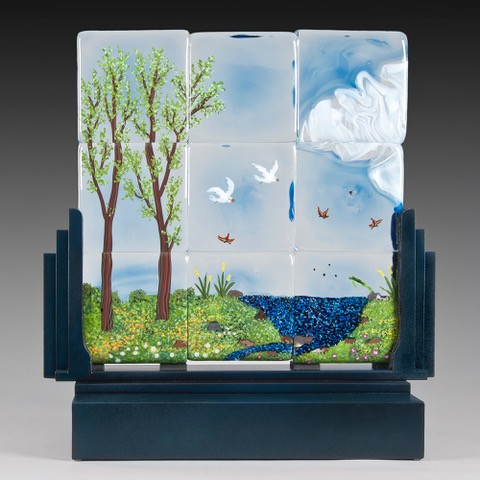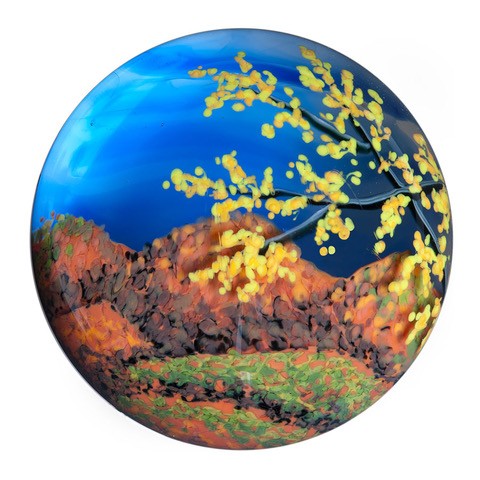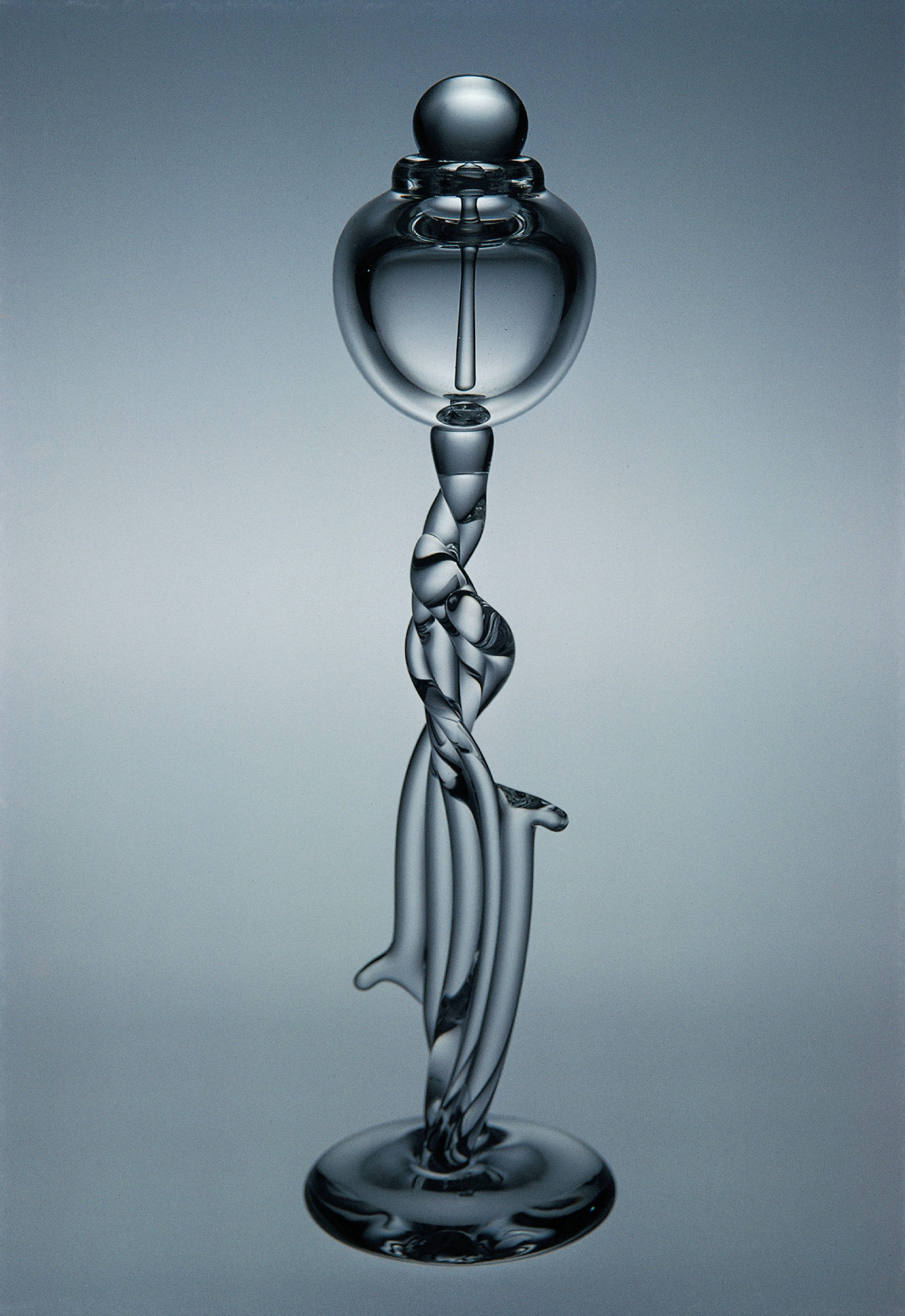
Image courtesy of Yaffa-Sikorksy-Todd
Yaffa Sikorsky-Todd
Artist Yaffa Sikorsky-Todd (1951– ) began her career in ceramics, earning a BFA from the Philadelphia College of Art (now University of the Arts) and working as a studio potter before studying glass as a graduate student at the Rochester Institute of Technology in the mid-1970s. Sikorsky-Todd began instructing at Penland in the summer of 1978, becoming the second woman ever to teach glass there. She and her husband, glass artist Jeffrey Todd, work collaboratively from their studio in Burnsville, North Carolina.
Works

Azura Pond, 2012. Image courtesy of Yaffa Sikorsky-Todd.

Autumn in the Mountains, 1989. Image courtesy of Yaffa Sikorsky-Todd.

Crystal Perfume Form, 1981. H: 12 in, D: 4 in. In Women Working in Glass by Lucartha Kohler, Schiffer Books Publishing Ltd., 2003. Photo: John Littleton.

Yaffa Sikorsky-Todd discusses Paul Stankard suggesting she and Jeff Todd title their new series of works.
01:23 TranscriptYaffa Sikorsky-Todd talks about Paul Stankard sharing his flameworking techniques at his workshop.
00:38 Transcript